ABOUT US
owned and operated by George Pittas and Bilio Tsoukala
The Greek Gastronomy Guide website (greekgastronomyguide.gr) was created to be a showcase for Greek gastronomy as a whole, in all its aspects and all its dimensions. This is because we believe that the logic that connects the network “Landscape – Environment – Agricultural Economy – Agricultural Produce – Gastronomy – Culture – Tourism” could and should form one of the bases for the country’s future development.
Our goal is to provide a detailed “census” of the gastronomic identity of every region in the country through a holistic, but primarily human-orientated approach.
The content of our website greekgastronomyguide.gr is the result of on-the-spot research, documentation and photography, with interviews and in-depth visits to each place. The project started with George Pittas’ travels over the past 25 years to every corner of Greece and deals with formerly untouched subjects related to Greek gastronomy – some of which are included in his six books – and with the research of Bilio Tsoukala, who from 2003 was the first to present local producers and their products in her television broadcasts for ERT (the Greek National Radio and Television Network).
George Pittas

From 1977 to 1980 he studied political economy and sociology and the University of Paris 8 (Vincennes). He was a founding member of the Neo Katoikein group in 1980 which for 20 years played a leading role in Greek furniture design and production.
Since 1995 he has been dividing his time between Athens and Paros, where he runs the model hotel complex Lefkes Village in the mountain settlement of the same name.
He served on the board of the Union of Greek Tourist Professionals (SETE) and of the Chamber of Greek Hotels and was active in matters related to cultural and alternative tourism.
Since 2010, as a board member of the Chamber of Greek Hotels, he has been head of Greek Breakfast programme, which aims to connect hotels with the gastronomic wealth of their own districts. In this role he travels all over the country creating original local Greek breakfast dishes with the most representative tastes and produce of each region.
His books (in Greek)
Ta Simadia tou Aigaiou (Signs Of the Aegean) (2007)
Paros – Odoiporiko ston Topio kai to Chrono (A Walk through Place and Time) (2008)
Athinaiki Taverna (The Athenian Taverna) (2009)
Ta Panigyria sto Aigaio (Religious and Folk Festivals in the Aegean) ((2011)
Ta Kafeneia tis Elladas (The traditional cafés of Greece) (2013)
Thisavrous tis Ellinikis Gastronomias (Treasures of Greek Gastronomy) (2014)
Bilio Tsoukala

Since 1984 she has worked as a journalist for newpapers and magazines such as ENA, Anti, Gynaika, Klik, Ego, Mesemvriani and Kerdos, and from 1994 to 2006 she was a columnist for Madame Figaro.
In 1985 she was a member of Channel 15, the Initiative Group for Free Radio, and played a leading role in breaking the state monopoly of the country’s radio and television networks with the opening of the first independent radio stations. In 1986 she gave radio broadcasts on the first public radio station, Athens 98.4, and later on TOP FM, Ant-1 and Alpha Radio.
She has been working in television since 1995, presenting programmes on culture, like “Plus and Minus” (Syn kai Plin), one of the first cultural “magazines” on public TV.
From 1993 to 2013 she hosted a show on ERT called “It has Taste” (Ehei Gousto), a daily, two-hour, live TV cultural programme.
She is married to George Pittas.
Books
Thisavroi tis Ellinikis Gastronomias (Treasures of Greek Gastronomy) – © 2014
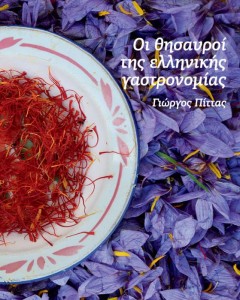
Ta Kafeneia tis Elladas (The traditional cafés of Greece) – © 2013
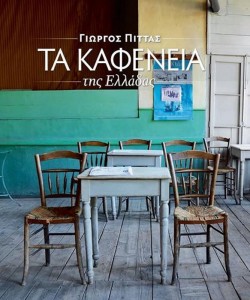
Ta Panigyria sto Aigaio (Religious and Folk Festivals in the Aegean) – © 2011
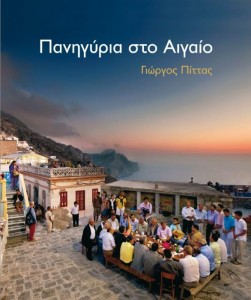
Athinaiki Taverna (The Athenian Taverna) – © 2009
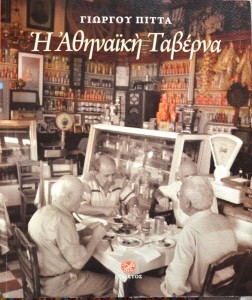
Paros – Odoiporiko ston Topo kai to Chrono (A Walk through Space and Time) – © 2008
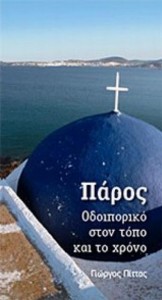
Ta Simadia tou Aigaiou (Signs of the Aegean) – © 2007
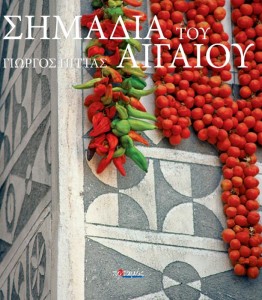
Philosophy
While giving detailed information about each of our subjects, our approach has been to focus on acquainting our visitors with the people involved in producing them, in developing them. We want their stories to be known. These people, creative, hard working souls in the countryside, are providing the answers to the challenges of our times. Many of them are single individuals making a difference on their own, others may have small family enterprises or even in a few cases large companies. Receiving minimal if any support from the state, choked by red tape and official indifference, they struggle against extremely unfavourable conditions. And yet they still win the battle for the domestic market and often even earn recognition abroad.
Young people, most of them well educated, juggling the roles of producers, manufacturers and merchants, are shaping a new business model. With their devotion to their homeland, respect for the environment, flair and passion for their work, insistence on quality and faith in the value of their products, they are building a new image of contemporary Greek entrepreneurship in the hinterland.
The same is true for those chefs, restaurant and taverna owners who ignore the siren call of city life and western style food fads and manage to present us with contemporary versions of Greek gastronomy by giving new interpretations to local products and local recipes.
Our stories are accompanied by photos taken by George Pittas on his trips, with the occasional exception, usually photos of special dishes provided by restaurant owners. Some of the photos on this website were first published in George Pittas’ books. They were taken spontaneously, with no prior adjustments or “stage management”. No formal tableware, professional kitchen equipment or any other kind of styling was used. Indeed, some of our subjects – depicted in the course of their work – even got cross with us for being underfoot and in the way.
Writer-traveller-photographer George Pittas was also thoroughly enjoying himself on these expeditions, so that some of the photographic material may be leave a bit to be desired from the artistic point of view. But for us it was much more important to capture the mood of the moment without any attempt at beautification or enhancing the subject, whether it was a religious festival, a café, an assortment of products or a plate of food. So don’t be surprised if, for example, you spot a soiled tablecloth littered with crumbs. That’s life, not perfect.



